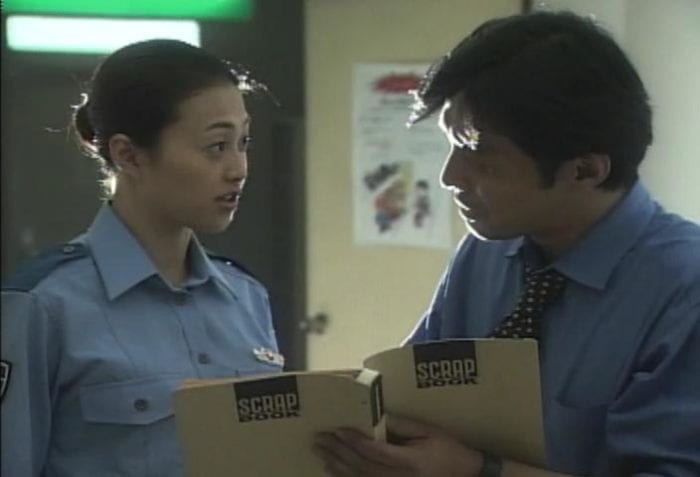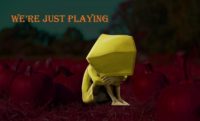Ju-On: The Curse 2 picks up right where The Curse ended. Quite Literally. A good 30-40 minutes is a retread of storylines we have already been introduced to. This would be fine normally if the strands were told in a way that more was revealed, or something was illuminated which we missed in the film. However, this is simply not the case. It ultimately ends up feeling like Takashi Shimizu didn’t quite have enough material prepared for a sequel, so he stole footage from the first film to pad the second. Now, there is a world in which Shimizu did this for those who didn’t bother to put the effort into catching the first film, however, those people shouldn’t matter especially when there is a clear “2” contained within the film’s title. It’s a blinking sign saying: “Halt! You may not understand what the hell is going on in this film if you haven’t seen the first one!”
 Perhaps if the film was closer to two hours, this retread would not have been as noticeable, but the film clocks in at 76 minutes. That is nearly half of the film that is footage from the first film. It seems like it would have been more beneficial for the 20-30 minutes of new footage to be added to the first film, making it a normal, feature-length of 90-100 minutes. But, alas, these are not the cards we have been dealt with in this cruel world. The most devastating aspect of this whole situation is that the new footage is actually really good and furthers the concept of the series quite well. The final ten minutes harbors some visceral frights and some visual horror delight that even caught me, a hardened horror fan, off guard on the first viewing.
Perhaps if the film was closer to two hours, this retread would not have been as noticeable, but the film clocks in at 76 minutes. That is nearly half of the film that is footage from the first film. It seems like it would have been more beneficial for the 20-30 minutes of new footage to be added to the first film, making it a normal, feature-length of 90-100 minutes. But, alas, these are not the cards we have been dealt with in this cruel world. The most devastating aspect of this whole situation is that the new footage is actually really good and furthers the concept of the series quite well. The final ten minutes harbors some visceral frights and some visual horror delight that even caught me, a hardened horror fan, off guard on the first viewing.
When the film shifts into new terrain, we are given a vision of how the violence I spoke about last time only multiplies outside the lives of the immediate families affected. The harboring rage of violence spreads like a disease out of Kayako’s and Toshio’s familial bounds. It seeps into the city’s water. It poisons the well. More and more innocents are caught in the melee. By the end of the film, there are multiple Kayakos in the emptied schoolyards growling and shifting from side to side while others crawl within the school seeking the lone survivor of the massacres. The grudge has officially moved beyond the control of any individual person and the inherent violence of it saturates the air.
What The Curse 2 gets right is its ability to ramp up the threat involved in the original film without jumping the proverbial shark. The mere suggestion of a multiplicity of vengeful spirits making sure that none survive who are touched by the initial actions that started the cycle in the first place. Everyone in this film is innocent, yet they are driven to madness or killed or made into a vengeful spirit by the end of the film. The Western audience that experiences this—if they are, indeed, paying attention to the thematic gravity of the film—is going to be challenged with a concept of fairness that we are not used to.
 Western society rewards equity proportionally based on work, skill, or some other form of conditionality—at least ideally it does. This is often viewed in positive forms. Seldom does it reach into the equity of negative consequences of actions or character. However, if Western viewers are paying attention, they should be offended by this franchise’s understanding of fairness. The characters in The Curse largely didn’t deserve the fates that were handed to them, but at least their proximity to the violent catalyst is somewhat reasonable. Let’s call it collateral damage.
Western society rewards equity proportionally based on work, skill, or some other form of conditionality—at least ideally it does. This is often viewed in positive forms. Seldom does it reach into the equity of negative consequences of actions or character. However, if Western viewers are paying attention, they should be offended by this franchise’s understanding of fairness. The characters in The Curse largely didn’t deserve the fates that were handed to them, but at least their proximity to the violent catalyst is somewhat reasonable. Let’s call it collateral damage.
However, the concentric circles of The Curse 2 are expanding out beyond the epicenter of the Edenic fall into violence and hellish nightmare. Yet these people, too, suffer at the hands of this incarnated violence. There is nothing equitable about this concept, such that their actions were not proportionally attuned to the punishment. However, Eastern societies are more driven by elements of honor and family; they are bound in generational covenantal behaviors that elude the philosophical underpinnings of Western ethical thinking. Eastern cultures are more apt to accentuate the collective or communal traits of a people over the individualism that has been touted in the West since the Enlightenment took the world by storm.
Individuals are bound up in the rights and wrongs, goods and bads, and blessings and curses of the ancestors/family that went before them. A father’s actions reflect socially, culturally, and materially on his offspring. His kids may not have acted with the same behavior, but they will receive the consequences of his wrongs regardless. All they can do is work towards righting, or “redeeming,” his wrongs. This is offensive to the ideals of neo-liberal, enlightened fairness. Yet, The Curse 2 shows this very concept in the flesh.
 The “private” actions of Saeko—who murders the wife and unborn child of Kobayashi—echo out from the telephone booth where he reveals to Kobayashi his deeds as if the sound waves carry the blood particles across the city via their telephone lines. According to this franchise, so far, there is no such thing as moral/immoral actions that lie fallow in the ground. All the seeds we plant and blood we spill grows or writhes from the soil. The Curse 2 shows us that violence begets violence and that it leeches even those unrelated to us.
The “private” actions of Saeko—who murders the wife and unborn child of Kobayashi—echo out from the telephone booth where he reveals to Kobayashi his deeds as if the sound waves carry the blood particles across the city via their telephone lines. According to this franchise, so far, there is no such thing as moral/immoral actions that lie fallow in the ground. All the seeds we plant and blood we spill grows or writhes from the soil. The Curse 2 shows us that violence begets violence and that it leeches even those unrelated to us.
It is unfortunate then that The Curse 2 wastes half of its runtime retreading previous footage from the first film. If these ideas had been explored beyond just the tantalizing imagery at the end, then the franchise might have become one of the most philosophically heavy and thoughtful horror franchises of all time. It would have been a subversion of Western ideas and being in favor of more Eastern philosophical models that surrender individual fairness to collective compassion and more communal understandings of ethical behavior.


